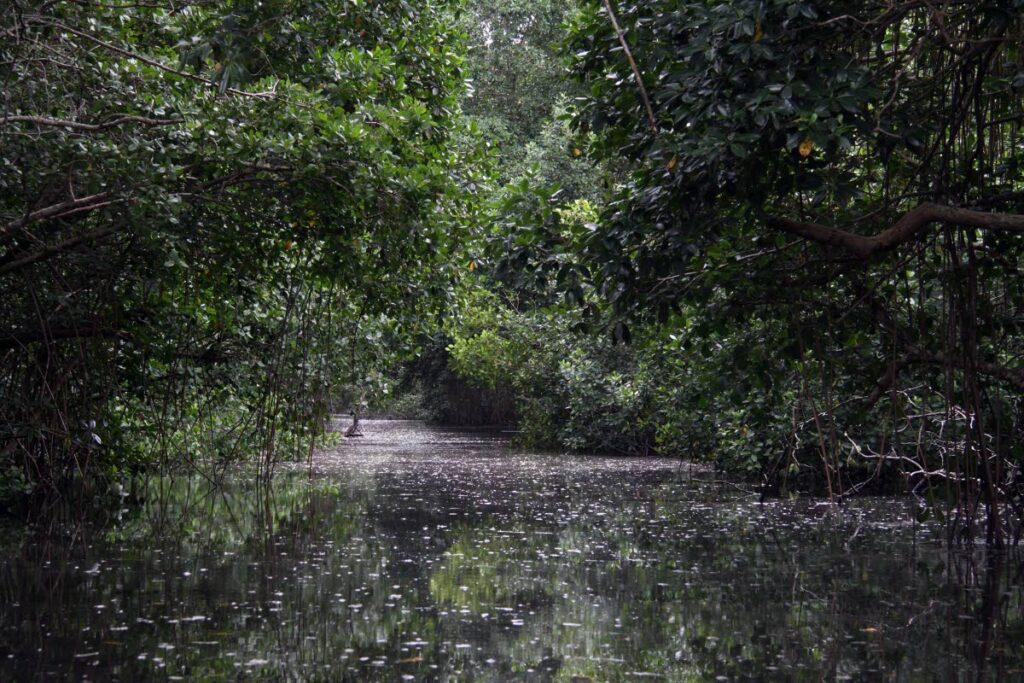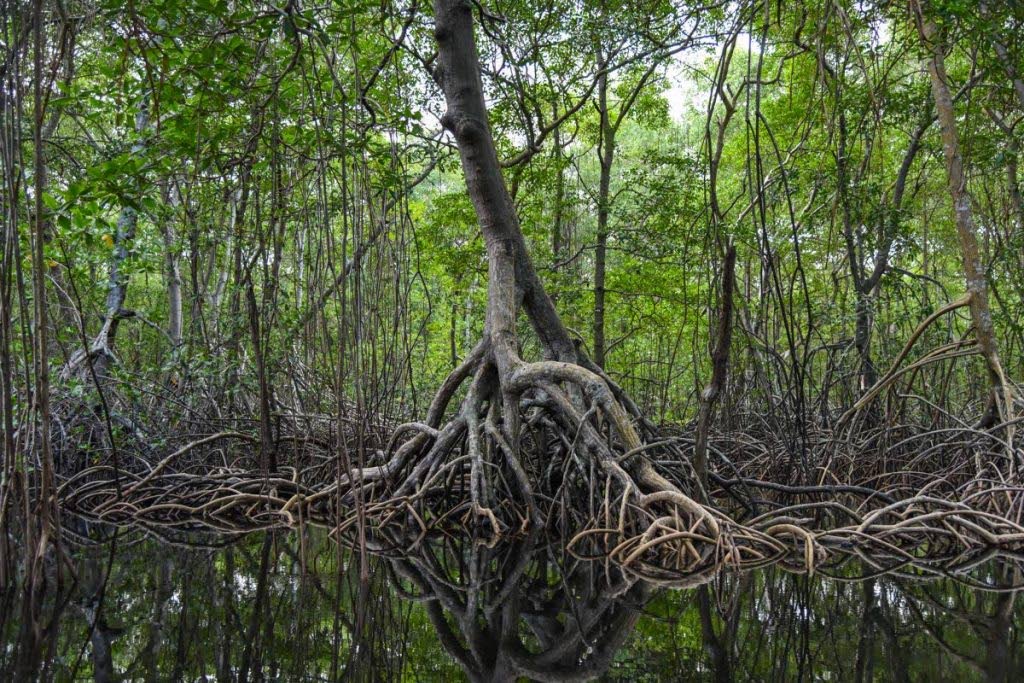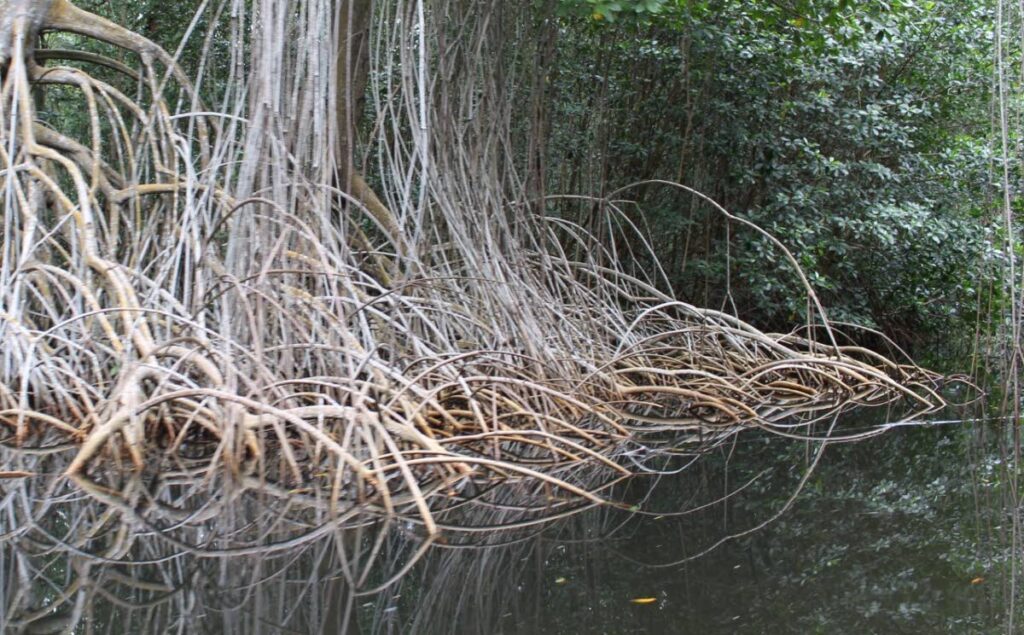The magnificent mangroves

Julie Morton
Mangrove swamps are found on tropical coasts. They thrive best at the mouths of rivers, behind sand bars and offshore islands, as well as in protected bays with shallow water and mudflats. The soil in these areas, is generally muddy. Mangroves like brackish water, or salt-sweet water. There are three main species of mangroves, red, black and white.
Mangroves have unusual roots. Red mangroves have ‘prop’ roots, which grow high out of the water. White and black mangrove roots grow upwards from the soil. These roots are often covered with algae, oysters, barnacles and mussels.

The seeds of the red and black mangroves become small plants or seedlings, right there on the tree. Red mangrove seedlings are like long pods, and black mangrove seedlings are more like beans. When the seedlings drop from the tree, they either fix themselves into the soil under the tree or float away in the sea currents.
The leaves of the mangrove provide food for a large number of species, which live in the mangrove swamps. Fiddler crabs and the mangrove tree crab feed on the leaves straight off the tree. The fallen leaves become a rich source of food for starfishes and sea urchins, which feed off the bottom, as well as barnacles, oysters and mussels, which live attached to the roots. Some worms and shellfish also feed on the leaves.

Mangrove swamps also provide homes for the brown conch, alligators or caimans, the scarlet ibis, herons and white egrets and several other water loving birds. Lobsters, shrimp and many kinds of large fishes spend part of their lives in the mangrove swamps using the sheltered, rich feeding grounds to breed and raise their young.
Mangrove swamps not only provide a home for many residents, and a rich nursery for the young of deep-sea fishes, they also protect coastlines from damage by hurricanes and erosion by sea currents. Mangroves are one of the most important plant species in the world.

Some easy questions to answer.
Where would you find mangrove swamps?
Describe brackish water.
Why are mangrove roots unusual?
Name the crabs mentioned in the lesson.
Which sea creatures feed on the fallen leaves of the mangrove?
Name some swamp birds.
How do deep-sea fishes use the mangrove swamps?
How do mangroves protect people?
Green Readers by author Julie Morton is a series to teach children about the environment through stories, poems and Q&A exercises.


Comments
"The magnificent mangroves"